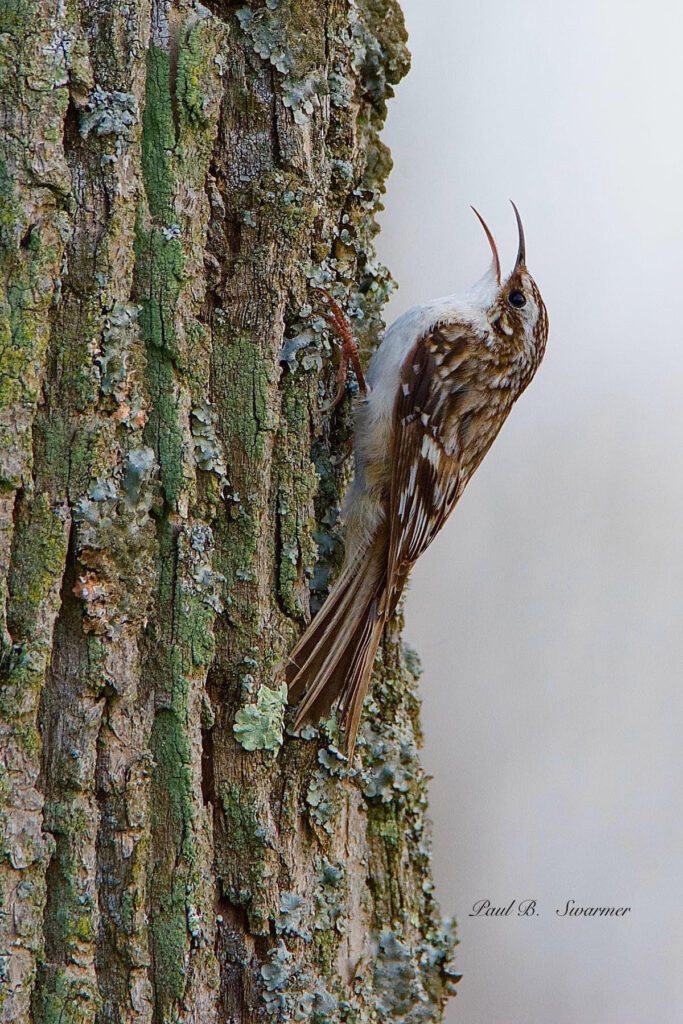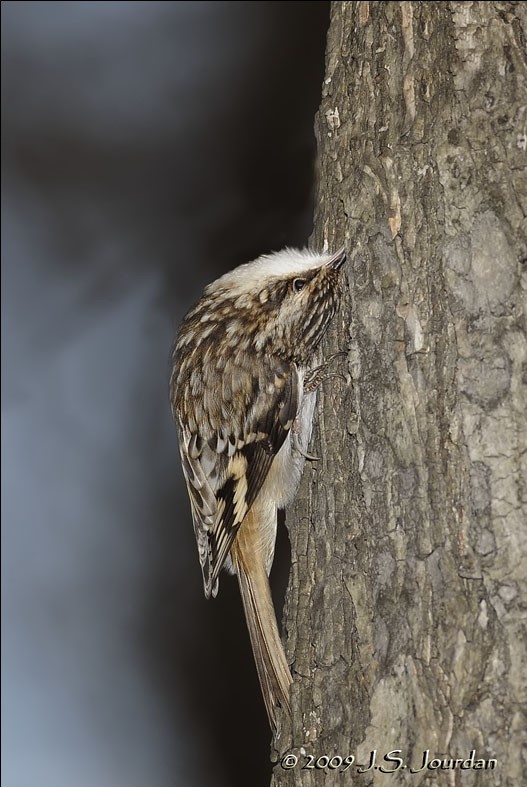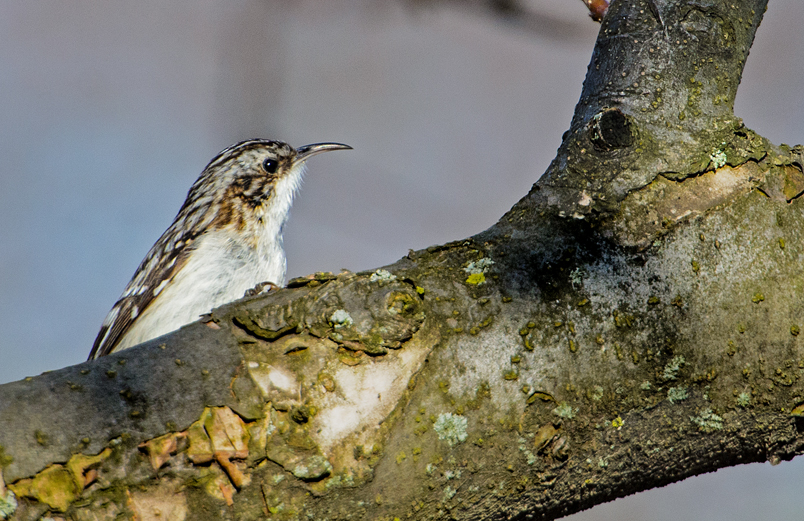Delicate. Hardy. Unique

Those three words first came to mind when describing the brown creeper. The habits of this bird are what endear it to me. When I find a brown creeper, I feel fortunate to be observe its uniqueness. Brown creepers prefer a vertical point of view and are built especially for that way of life. At the end of short legs are incredibly long toes that support long curved claws. The tail is also noticeably long in relation to the birds’ size. Its lengthy design allows the tail feathers to support the bird as it hitches up the bark of the tree. And therein lies part of the essence of this bird.
Typically starting at the bottom of the tree trunk, the creeper slowly inches up the bark in namesake fashion, spiraling around the trunk as it goes. Working quickly and efficiently, it reaches the top of the tree trunk and then flies down to the trunk of the next tree and begins the ascent over again. One can only marvel as you watch a creeper at work in a hardwood forest in the middle of a Michigan winter, the five- inch speck of a bird looking so small against the dark skeletons of trees.
There are two survival strategies employed by the brown creeper. One is to join a mixed flock, which is a winter phenomenon. With territorial barriers set aside because breeding season is over, creepers, chickadees, nuthatches, kinglets, tufted titmice and woodpeckers will travel along as a flock. The advantages to flocking are that more eyes are better able to detect predators, and the different foraging techniques of these birds minimizes competition for the same foods. In fact, it is interesting to watch nuthatches and brown creepers pass each other as the creeper works its way up and the nuthatch works its way down the same tree trunk. The mixed winter flocks of birds are poetry in motion to those who care to spend some time observing the variations in feeding techniques. The other survival technique employed by the brown creeper is the utilization of tree cavities to keep shelter from the winter elements. They may huddle in groups within these cavities to help conserve energy.

The feeding tool of the creeper is a curved, needle-like bill, which it uses to probe the bark surface, sliding this precision instrument under crevices to remove the delicate invertebrates that make up its diet. Occasionally, creepers will visit suet feeders. When watching them feed, it is not unusual to be able to approach creepers quite closely. The bird’s eyes are set close together to provide the binocular vision needed to locate food. Looking so intently at the bark, they do not have peripheral vision that allows them to detect us as we approach from behind.
When spring arrives, there will be days when the woods are bursting with creepers. Covering the trunks of trees everywhere, the creepers advance through the woods in their spiraling ballet. The destinations for this species are the mature deciduous, coniferous and mixed forests and woodlands, especially in wet areas such as bogs. Dead trees play a pivotal role in the population of the brown creeper as they nest behind the bark that is peeling away from the trunk of these trees. The hammock shaped nest is comprised of conifer needles, bark strips, mosses and spider cocoons and is lined with other birds’ feathers. This work of art can take the female from one week to a month to complete.

Counter shaded in coloring to aid in deceiving predators, the brown of the creeper is very crisp and clean in contrast to the white under parts. As difficult as it may be to visually spot the creeper, a keen ear can aid in locating the bird. Listen for a thin whistle, so high pitched that many birders fail to hear it. In spring, the call is replaced by song, which is boisterous and comprised of accelerating, cascading notes.
May you be graced with the presence of a brown creeper as you walk through the woods or your neighborhood and perhaps, you will be so fortunate as to entice the bird to your feeding station.
Photo credits with thanks to Paul Swarmer, Jerry Jourdan and Bill Rapai.
